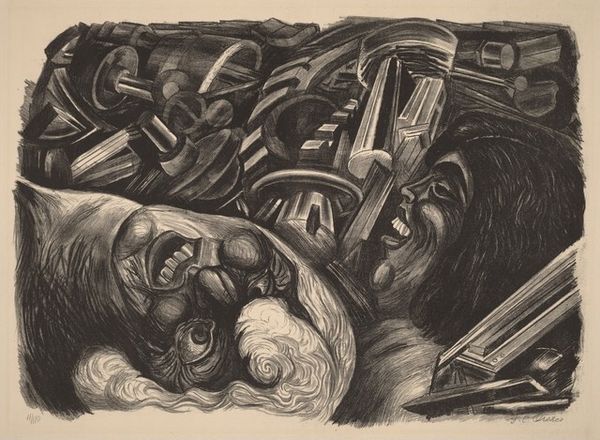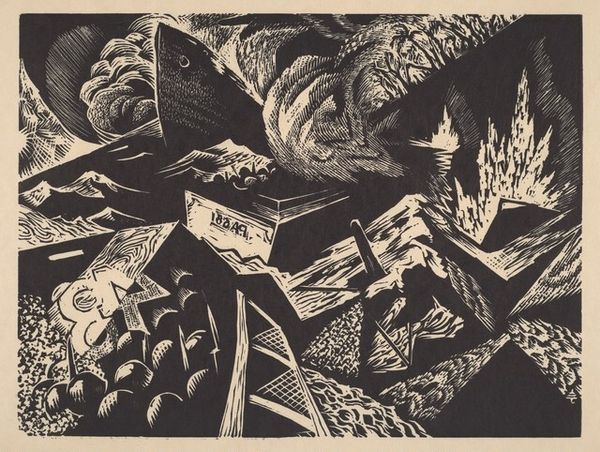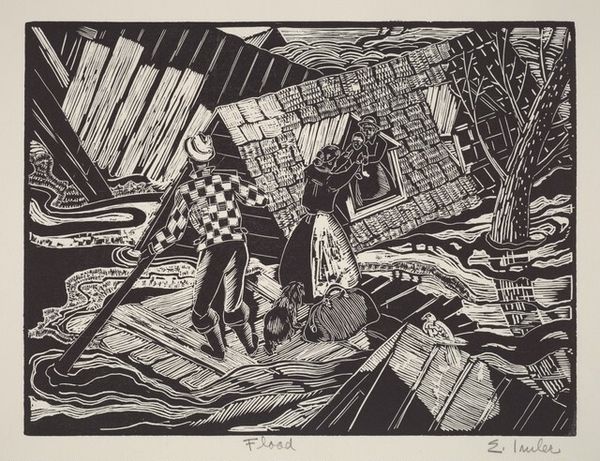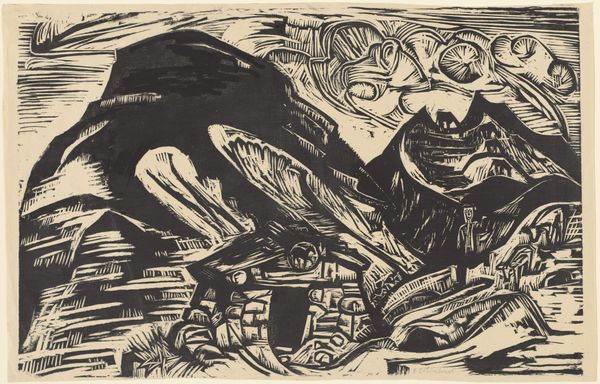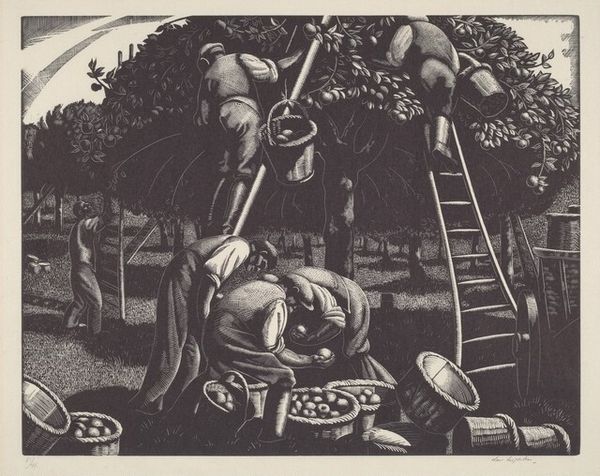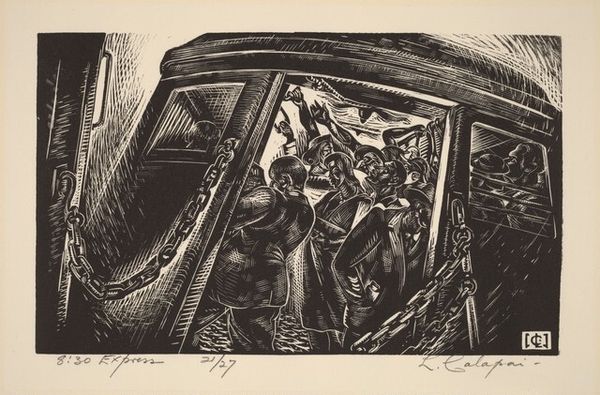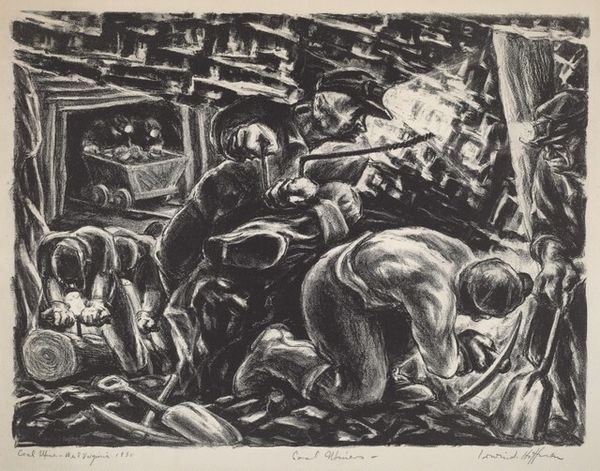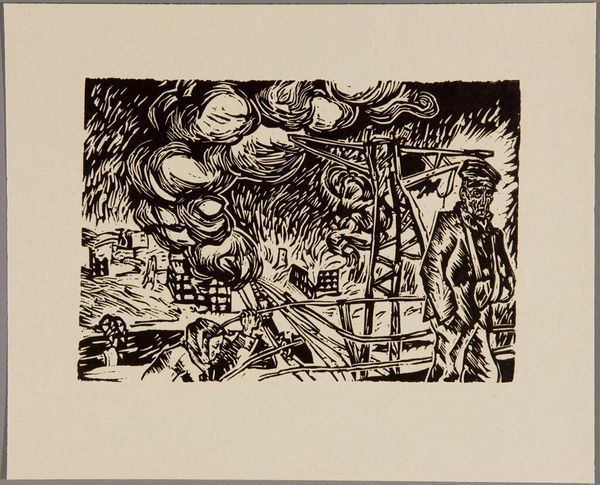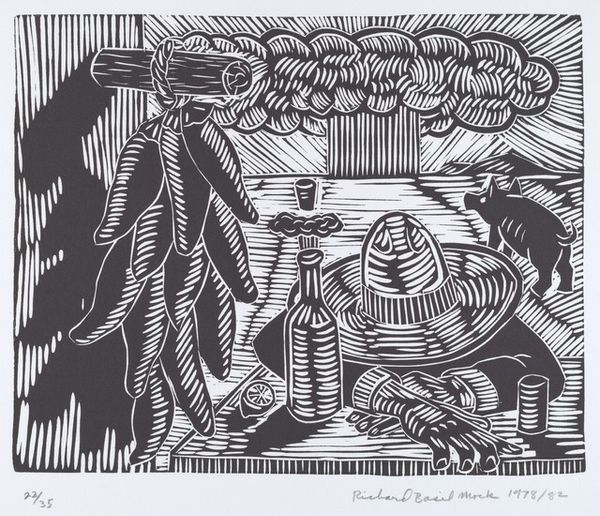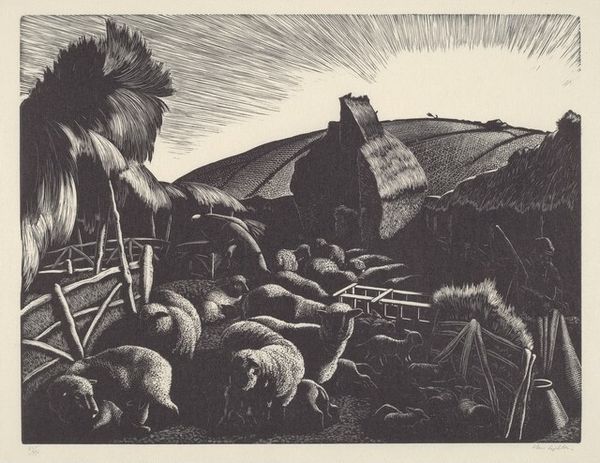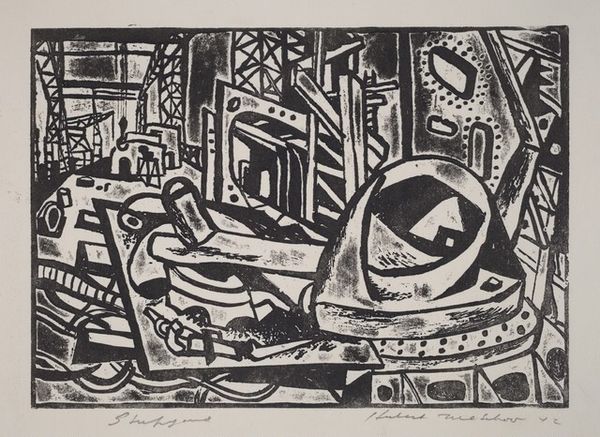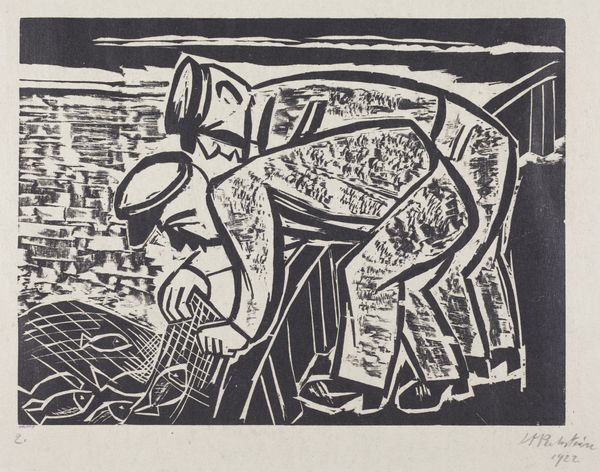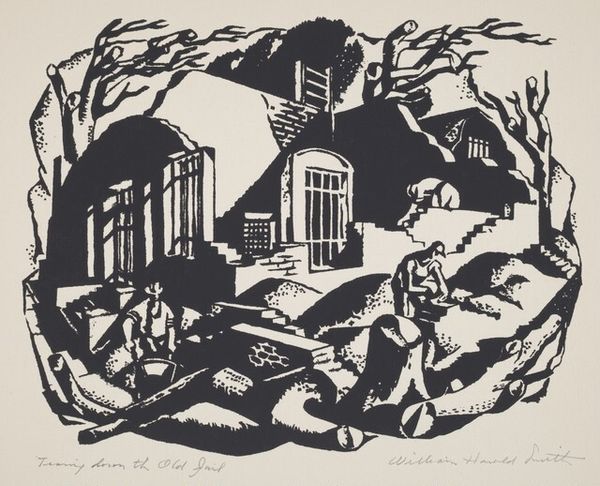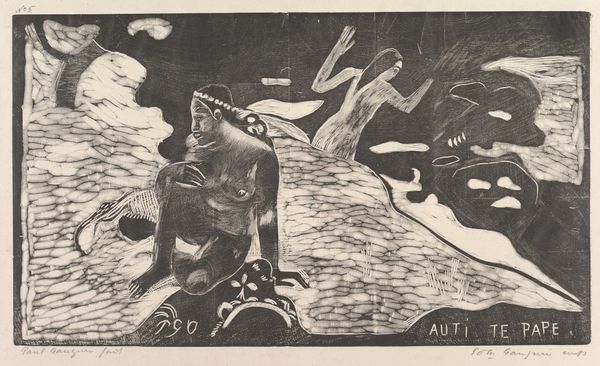
print, woodcut
# print
#
landscape
#
woodcut
#
genre-painting
#
realism
Dimensions: image: 155 x 201 mm sheet: 196 x 265 mm
Copyright: National Gallery of Art: CC0 1.0
Editor: Charles Surendorf’s woodcut, "California, 1938," portrays a family seemingly living out of their car. There’s a distinct feeling of hardship, yet also a kind of resilient domesticity. What catches your eye in this piece? Curator: Immediately, I see the image operating as social commentary. Given the date, 1938, it speaks directly to the Dust Bowl migration and the plight of migrant farmworkers in California. The family, the makeshift camp, the tools and repair equipment next to the car... it's all emblematic of a population forced into itinerant labor due to economic and ecological collapse. Editor: It definitely tells a story, though it’s subtly told. The woman holding a baby almost blends into the background and the whole scene feels incredibly intimate. Do you see that intimacy as a deliberate artistic choice? Curator: Absolutely. That blending underscores their marginalization, making them almost invisible within the larger social fabric. Consider also how Surendorf’s medium – the woodcut – itself conveys something of the stark realities they faced. The medium allows the artist to carve away what he needs to get his story across. What details do you observe in that family's car, in what is carved away? Editor: The number plate of the car, the goat tied nearby…it all really grounds the image, while perhaps pointing at the daily struggle and efforts to create home away from home. Curator: Precisely. The 'California' on the plate speaks to a broken promise, doesn't it? All those possessions loaded onto the vehicle also challenge conventional ideas of home and belonging. It urges us to think about what constitutes a community, and who is included, and excluded, from it. Editor: This has made me consider migrant experiences with an entirely fresh perspective. I really appreciate you shedding light on that intersection of art, history, and social narrative. Curator: And I value your observations on intimacy and resilience – crucial elements for understanding how people survive and create meaning even in the toughest situations.
Comments
No comments
Be the first to comment and join the conversation on the ultimate creative platform.
